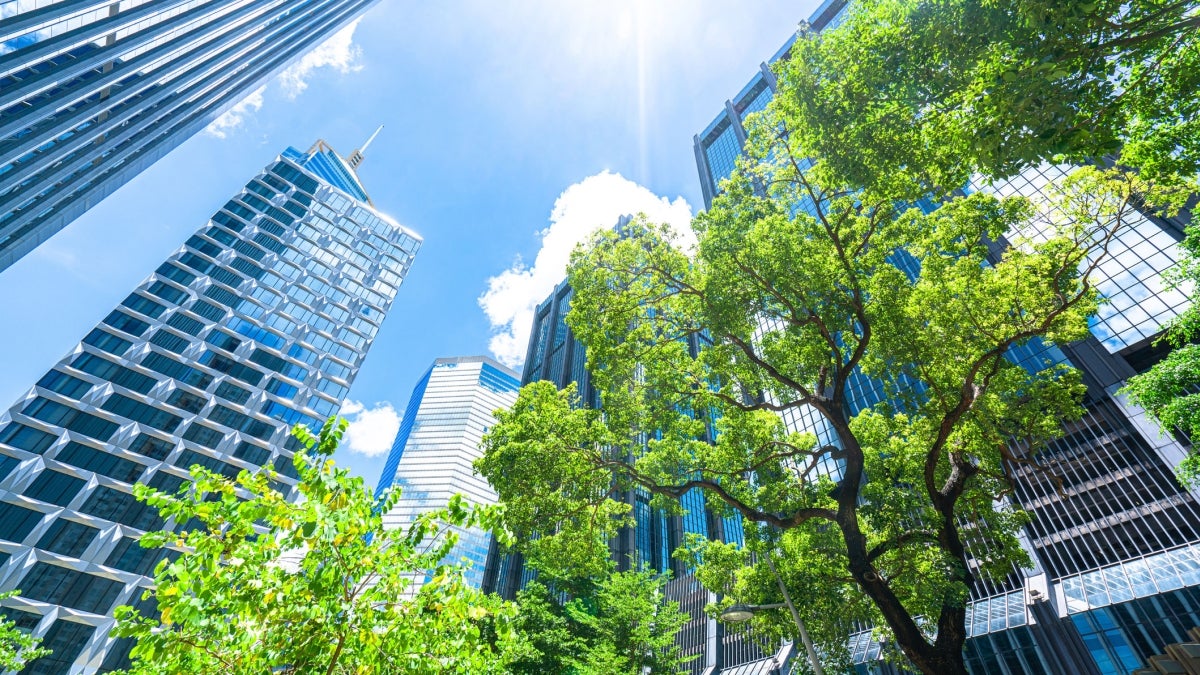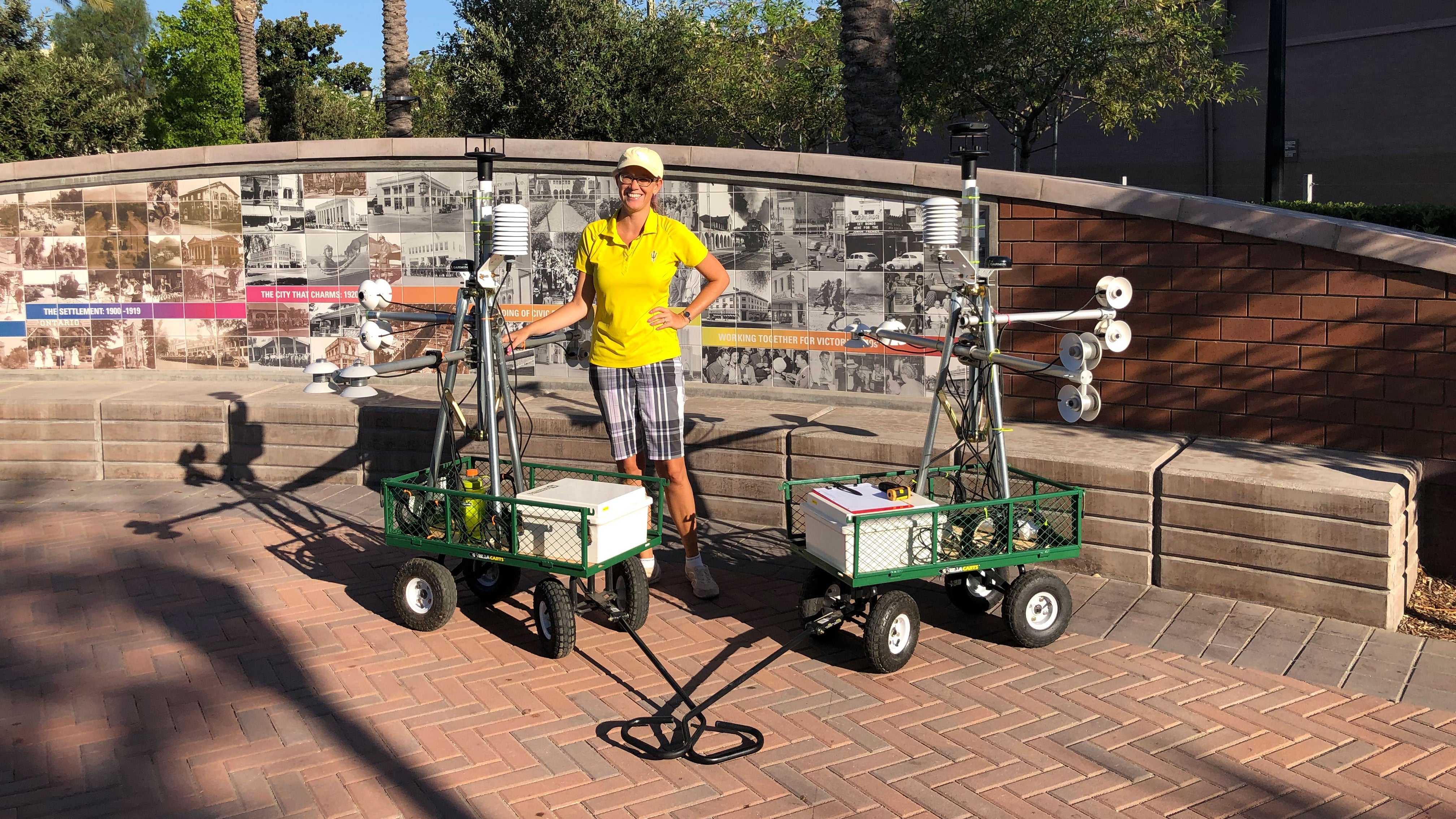It’s a bright, hot summer day. To cool off, you have the choice of taking shelter under a shade sail, in the shade of a tall building or beneath a leafy tree. Which will you choose?
Climate scientists at Arizona State University put in the legwork to get the answer. Now, the American Meteorological Society is sharing these findings with the publication of the study “50 Grades of Shade.”
“Cities have started to plant trees as a means to shade the environment. But oftentimes you can’t really plant trees, because of infrastructure challenges. There may be sewer lines underground, internet cables or business signs that will be blocked. We went out to see if there are any viable alternatives to trees for providing shade to keep people comfortable outdoors,” said Ariane Middel, assistant professor in ASU’s School of Arts, Media and Engineering and principal investigator for the study. She also has a joint appointment with ASU’s School of Computing, Informatics, and Decision Systems Engineering.
Video by Steve Filmer/ASU
Their yardstick to measure the comfort power of different shade sources is MaRTy, a garden cart packed with sensors.
“MaRTy measures mean radiant temperature — MRT — the radiation that hits your body,” Middel said, “so it’s much more accurate in how you’re experiencing the heat, compared to air temperature alone.”
The team repeatedly wheeled MaRTy to spots around Tempe, Arizona, near ASU's campus. On hot summer days, they took readings at bus stops, parks and city sidewalks.
Each checkpoint fit one of three categories: lightweight or engineered shade, shade from urban forms or natural shade from trees. “Lightweight or engineered shade” includes things like umbrellas and shade sails. “Shade from urban forms” are places like building overhangs, tunnels and breezeways. Tree shade was measured from native and desert-adapted trees that are common in central Arizona. At each stop, several sun-exposed readings were included as references. The fieldwork includes measurements taken right after sunset.
The winner: shade from urban forms.
“That does not mean we should stop planting trees,” Middel is quick to add. “Trees have a lot of co-benefits. But if a city has limited resources, you may not need to add trees near tall buildings.”
ASU climate scientist Ariane Middel poses with two MaRTy units — carts packed with sensors that measure mean radiant temperature, an important component of thermal comfort or how we experience heat in a given space. Photo courtesy of Ariane Middel
The study adds important findings to the understanding of what scientists call the urban heat island effect, which causes urban areas to stay hotter, longer.
“You really feel what it is to have impervious surfaces that trap the heat and give it back,” said Florian Schneider, a PhD candidate in ASU’s School of Sustainability who helped with much of the data gathering of the MaRTy instrument. “Especially right after sunset. It’s like you’re standing next to an oven that’s open and running, because it’s giving back the heat with such intensity.”
Next, the team will work toward building an online decision-making tool that cities can use to assess the performance of any shade type. The tool would give city planners a simulated shade curve specific to their position on Earth and help them decide which shade source to add to their designs. Middel’s team has just received funding from ASU’s Healthy Urban Environments initiative, and they hope to create the tool over the next year.
Learn more about Middel's work at shadelab.asu.edu.
Top image by Chunyip Wong/iStock
More Environment and sustainability

From ASU to the Amazon: Student bridges communities with solar canoe project
While Elizabeth Swanson Andi’s peers were lining up to collect their diplomas at the fall 2018 graduation ceremony at Arizona State University, she was on a plane headed to the Amazon rainforest in…

From environmental storytelling to hydroponics, student cohort crafts solutions for a better future
A select group of students from Arizona State University's College of Global Futures, a unit within the Julie Ann Wrigley Global Futures Laboratory, is laying the foundation to drive change…

2 ASU faculty elected as AAAS Fellows
Two outstanding Arizona State University faculty spanning the physical sciences, psychological sciences and science policy have been named Fellows of the American Association for the Advancement of…



